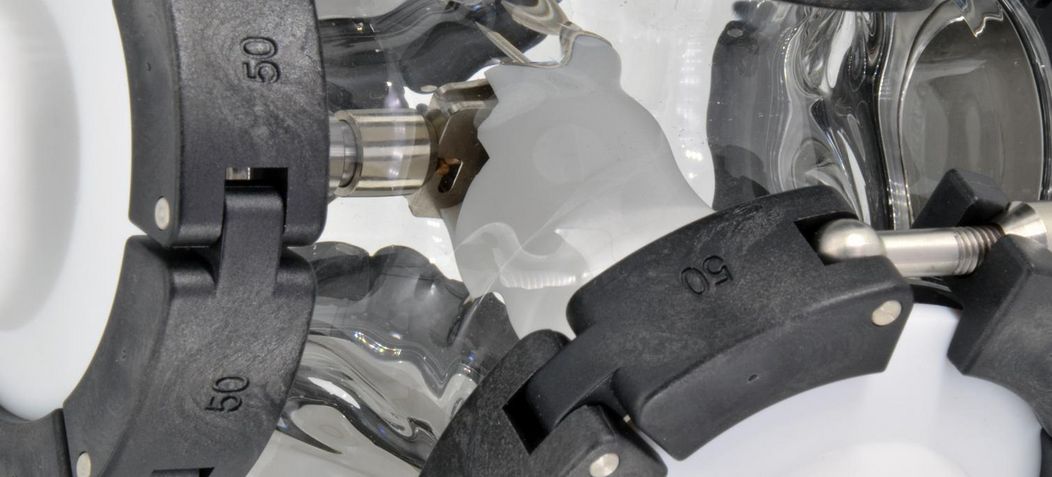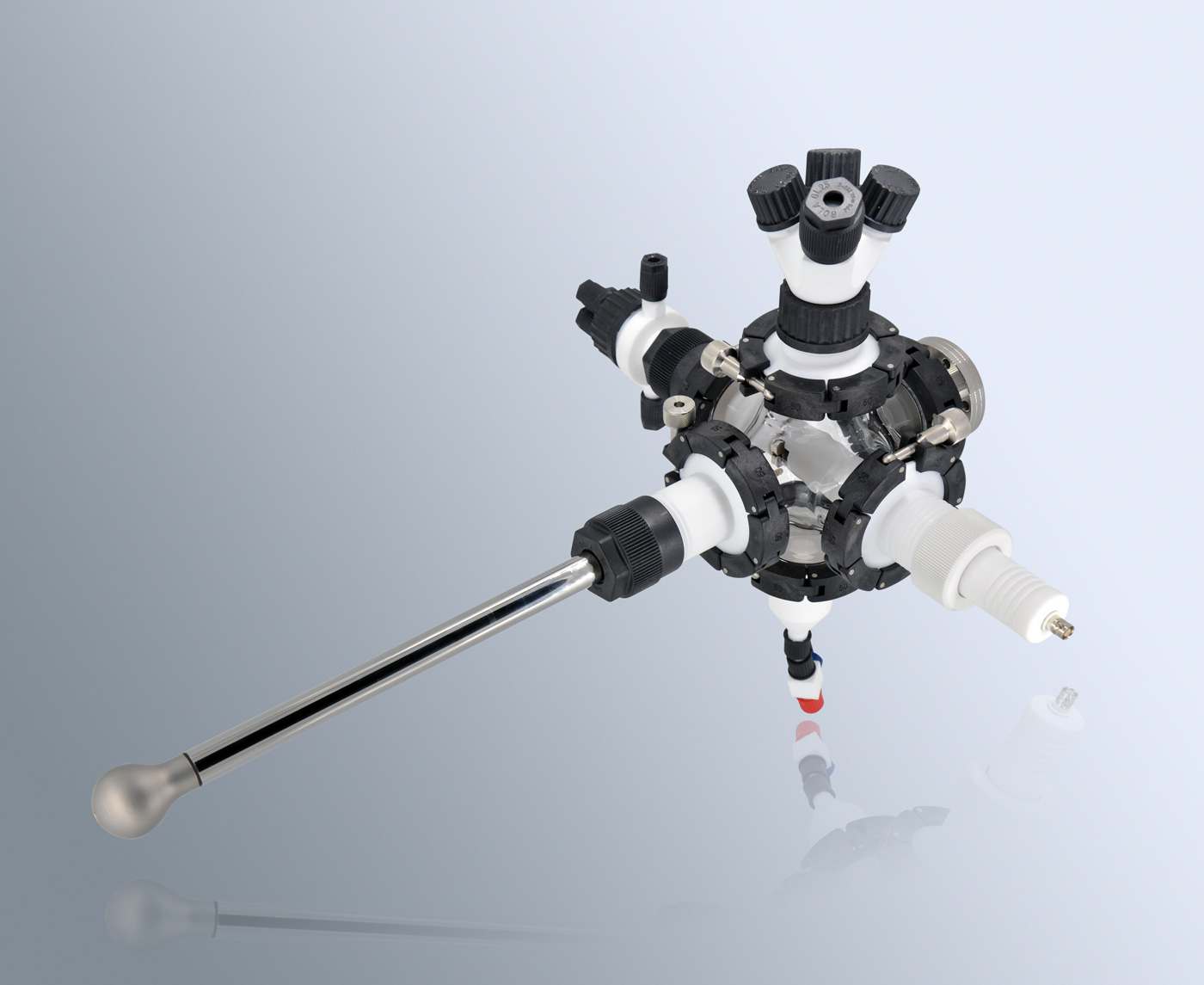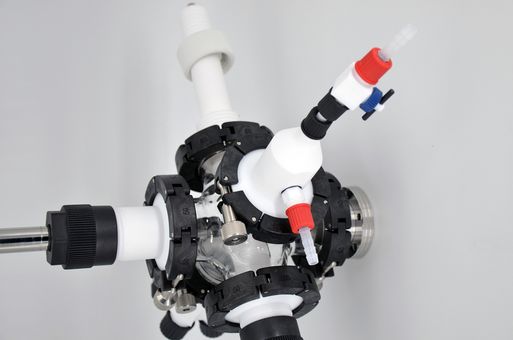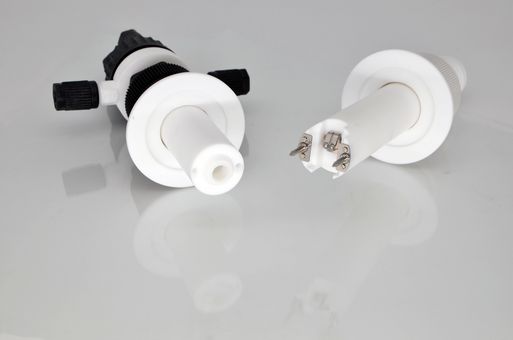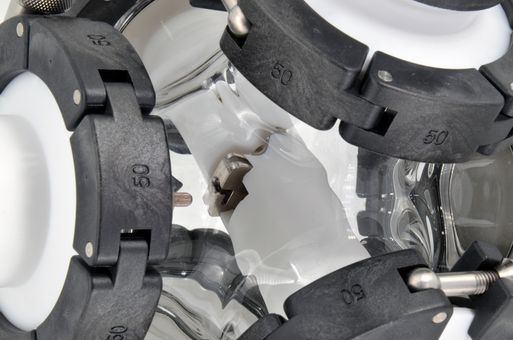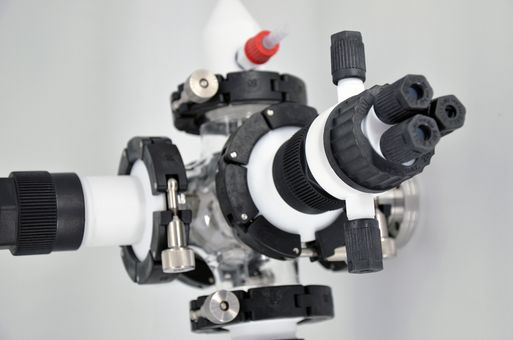Three-electrode-cell for electrochemical experiments under ambient pressure inert atmospheres
Since more than 10 years SPECS sells an in situ (IS) three electrode electrochemical cell (EC), that works under inert gas atmosphere at ambient pressure (AP) conditions. Thus it is named IS-EC-AP and can be coupled via a buffer chamber to any vacuum system. We have reviewed the design recently for easier and more flexible operation. The cell itself is a 6-way cross made from glas with KF flanges. The sample is transferred is realized horizontally by a transfer rod (port 1, left) into and out of the stainless steel buffer chamber (port 2, right) coupled via a gate valve.
Setup and operation
Sample Transfer and Operation of the three-electrode electrochemical cell insert
Now the cell is ready for electrochemical experiments. Because of the inert gas and the construction entirely made from Teflon and glas parts, the experiments are extremely clean, in case the electrodes and the electrolyte quality allows for that.
Once the experiment is finished, the electrolyte reservoir can be emptied and the cell can be released from the sample stage. The free access to the sample surface allows now for cleaning and drying of the sample surface and back transfer from inert gas to vacuum without any contact with moisture or air for further analysis. By this even reaction sensitive electrochemical systems, like Lithiumionbattery systems can be treated and analyzed in a clean way. After analysis the sample can be transferred back for the next electrochemical reaction step.
IS-EC-AP is a very versatile three-electrode electrochemical cell, that allows for a wide variety of experiments. In case of interest please contact sales for further discussions of your application.
